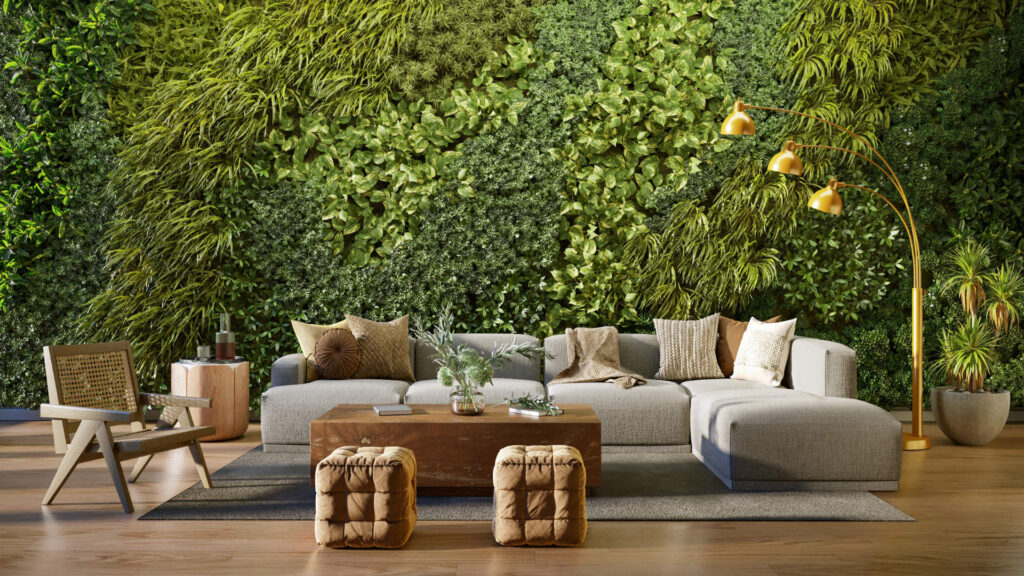
Have you ever wondered if the house you live in could actually make the world a better place? Could the way we design our homes really help fight climate change and protect the environment?
The surprising answer is yes, it can. As an interior engineer who has been working in residential, corporate, and commercial spaces for more than a decade, I’ve seen how small design decisions inside a home can have a massive impact on energy use, waste, and even overall wellbeing. Eco-friendly architecture isn’t just a fancy trend—it’s a practical way to make your home healthier, more cost-effective, and kinder to the planet.

When people hear “eco-friendly architecture,” many immediately think about solar panels or expensive technology. While those help, the real secret is in the design choices we make at the very beginning. For example, a house with large windows placed in the right direction will need less electric light during the day. A properly ventilated space can reduce the need for constant air-conditioning. These might sound like small details, but they save energy every single day for decades.
Think of it this way: your home is like a living system. The better it breathes, the less it consumes, and the healthier it keeps you.
Traditional construction materials often come at a cost to nature. Cutting down forests for timber or using non-recyclable plastics adds up to a lot of waste. That’s why eco-friendly architecture focuses on sustainable materials. Bamboo, for example, grows quickly and is stronger than many types of wood. Recycled steel reduces mining, and reclaimed wood gives a second life to materials that would otherwise be thrown away.
Even the paints and finishes matter. Low-VOC (volatile organic compounds) paints don’t release harmful gases into the air, which means your family breathes healthier air inside your home.
One of the simplest eco-friendly tricks is to work with nature instead of against it. Imagine waking up to sunlight streaming in naturally, rather than flicking on a bulb. Or think about how a gentle breeze moving through your living room could save you from running the AC all day.
This is where design becomes art. Large south-facing windows, skylights, open floor layouts, and cross-ventilation systems all make your home feel alive. Adding green roofs or vertical gardens also helps. Not only do plants filter the air, but they also keep the building cooler during hot months. A home that works with natural light and air is not only eco-friendly but also emotionally uplifting.
Energy and water are the two lifelines of a home, but they are also the two areas where waste happens the most. Eco-friendly homes use renewable energy sources like solar panels or small wind systems where possible. But even without those, simple steps like LED lighting, insulated walls, and smart thermostats cut down on energy bills.
Water can be saved through rainwater harvesting systems and greywater recycling. Imagine using the water from your sink to water your garden instead of letting it go to waste. Low-flow faucets and efficient toilets may not seem exciting, but they add up to huge savings over the years.
Now, let’s make it personal. What’s in it for you? The first benefit is clear: lower bills. Using less electricity and water means you save money every month. The second is your health. A home with clean air, natural light, and non-toxic finishes is better for your family. The third is value. Eco-friendly homes are becoming more desirable in the real estate market, which means if you ever sell your property, it could fetch a higher price.
But beyond personal gains, the bigger picture is powerful. By choosing eco-friendly design, your home becomes part of a global movement to protect forests, reduce pollution, and slow down climate change. Imagine if every home did its part—our planet would breathe easier.
Your home isn’t just a shelter; it’s a reflection of how you live and what you believe in. When you design or renovate it with eco-friendly principles, you’re not only building for yourself—you’re building for future generations.
The journey toward sustainability doesn’t have to be overwhelming. It’s about small, thoughtful choices that add up over time. A window placed in the right spot, a paint that doesn’t poison the air, a roof that grows plants—these are all steps toward a healthier planet. And it all starts with your home.
Q1: Is eco-friendly architecture more expensive?
Not always. Some eco-friendly materials cost more upfront, but they save money in the long run through lower energy and water bills.
Q2: Can I make my existing home eco-friendly, or do I need a new build?
You don’t need a brand-new house. Small changes like better insulation, energy-efficient lighting, and water-saving fixtures can make a big difference.
Q3: Does eco-friendly design mean compromising on style?
Absolutely not. In fact, eco-friendly interiors often look more natural, modern, and timeless because they use materials and layouts inspired by nature.
Q4: How do eco-friendly homes affect health?
Using non-toxic materials, increasing natural light, and improving ventilation create cleaner air and a healthier living environment for your family.
Q5: Why should I care if my single home is eco-friendly?
Because every home counts. One household may seem small, but millions of eco-conscious homes together can create a massive positive change for the planet.